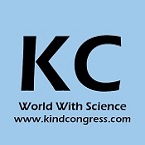Renowned Speakers

George Perry
University of Texas at San Antonio , USA

Fabio Apone
Arterra Bioscience srl, Italy

Aneta nitsch Osuch
Medical University of Warsaw, Poland

Ananda M. Chakrabarty
University of Illinois, USA

Ana Falcon
National Center for Biotechnology, Spain

Rita De Santis
Sigma Tau SpA, Italy

Bruno Pozzetto
University Hospital of Saint-Étienne, France

Wilfried Schwab
Technical University München, Germany
Recommended Global Pharmaceutical Sciences Webinars & Conferences
Europe & UK
Asia Pacific & Middle East
Canada
Biotech-2023
About Conference
Biotech-2023 Conference invites everyone operating within the field of materials to attend “26th International Congress on Pharmaceutical Biotechnology Research which I going to be held in June 26-27, 2023 Paris, France” which is going to be held during June 26-27, 2023 in Paris, France. We are welcoming all the Speakers and Delegates from every corner of the World to join us at Pharmaceutical Biotechnology Research. Biotech-2023 is going to offer scientific talks by Keynote Speakers, Oral talks, Symposiums, Poster Presentation, Exhibitions and many more.
Biotech-2023 will offer an International platform where Scholars and experts belonging to the Pharmaceutical background and working in that field can showcase their scientific work, research based on the following topics such as Bio Technology, Pharmacy, Synthetic Biotechnology, Genomics and many more. Industries related to Bio Technological and Computer assisted drug design is all invited to showcase their advanced product so that their products can get exposure.
Sessions and Tracks
Biosimilar medicines may provide cost savings for patients who can benefit from biologic medicines. By potentially providing more affordable options, biosimilar medicines can allow for the reallocation of resources to other areas of patient care. Sensitivity of Biosimilars is high i.e. the temperature plays a big role in their maintenance. Hence, they have to be distributed through a cold chain network. 2. Their development costs are much more as compared to the generic drugs.
Biosimilars are also used to treat other medical conditions. For example, adalimumab (Humira) is used to treat conditions including arthritis, Crohn's disease and ulcerative colitis. Biosimilars for this drug include Imraldi, Amgevita, Hyrimoz, Idacio, and Yuflyma. For equal efficacy and safety, biosimilar drugs require much less research and development than their reference biologics, since they are a very similar copy. This means they are much cheaper to produce. The money saved can be reinvested.
Nanobiotechnology is a multi-strategic technique that combines nanotechnology and biotechnology to engineer the properties of therapeutic agents, e.g., target delivery of therapeutics by nanoparticles, in a unique way as paradigm shifts from fundamental biological study to clinical pharmacology.Nanobiotechnology represents the integration between biotechnology and nanotechnology currently having great importance besides the application for developing biosynthetic and eco-friendly technology for the purpose of manufacturing new materials at the nanoscale level in the size range of 1–100 nm. Nanobiotechnology is the application of nanotechnology in biological fields. Nanotechnology is a multidisciplinary field that currently recruits approach, technology and facility available in conventional as well as advanced avenues of engineering, physics, chemistry and biology.
Track 3.Therapeutic Biotechnology:
Therapeutics is the use of the drugs and process of managing the drugs during the treatment of the disease. It is the biotechnology which has made it possible to use therapeutics and made advances in this technology. The main subfields of biotechnology are medical (red) biotechnology, agricultural (green) biotechnology, industrial (white) biotechnology, marine (blue) biotechnology, food biotechnology, and environmental Biotechnology.
A type of treatment that uses substances made from living organisms to treat disease. These substances may occur naturally in the body or may be made in the laboratory. In cancer, some biological therapies stimulate or suppress the immune system to help the body fight cancer. Therapeutic purpose - means any of the following purposes, or a purpose in connection with any of the following purposes: preventing, diagnosing, monitoring, alleviating, treating, curing, or compensating for, a disease, ailment, defect, or injury; or. Influencing, inhibiting, or modifying a physiological process.
Track 4.DNA/protein engineering and processing:
Protein engineering is the process by which a researcher modifies a protein sequence through substitution, insertion, or deletion of nucleotides in the encoding gene, with the goal of obtaining a modified protein that is more suitable for a particular application or purpose than the unmodified protein.
There are three major approaches of protein engineering research, namely, directed evolution, rational design, and de novo design. Rational design is an effective method of protein engineering when the three-dimensional structure and mechanism of the protein is well known.
Protein engineering and directed evolution are powerful technologies for probing protein sequence-function relationships. These methods have been used to engineer both plant-derived proteins and exogenous proteins heterologous expressed in plants.
Track 5.Synthetic biotechnology:
From the perspective of the Biotechnology industry, synthetic biology has already been applied to engineer the efficient production of small organic molecules for the chemical industry, and is making important contributions to the engineering of mammalian cells for human therapy. Synthetic biology refers to a set of concepts, approaches, and tools within Biotechnology that enable the modification or creation of biological organisms. While there remains no universally agreed-upon definition of synthetic biology (with some defining it more narrowly and others more broadly
Track 6.Drug delivery and targeting:
Targeted Drug Delivery, sometimes called smart Drug Delivery, is a method of delivering medication to a patient in a manner that increases the concentration of the medication in some parts of the body relative to others.Targeted drug delivery is a system of specifying the drug moiety directly into its targeted body area (organ, cellular, and subcellular level of specific tissue) to overcome the specific toxic effect of conventional drug delivery, thereby reducing the amount of drug required for therapeutic efficacy. Drug delivery is the method or process of administering a Pharmaceutical compound to achieve a therapeutic effect in humans or animals. For the treatment of human diseases, nasal and pulmonary routes of Drug Delivery are gaining increasing importance. The advantages to the targeted release system is the reduction in the frequency of the dosages taken by the patient, having a more uniform effect of the drug, reduction of drug side-effects, and reduced fluctuation in circulating drug levels.
Track 7.Molecular pharmaceutics and molecular pharmacology:
Molecular Pharmaceutics is a peer-reviewed scientific journal covering research on the molecular mechanistic understanding of drug delivery and drug delivery systems, including physical and pharmaceutical chemistry, Biochemistry and biophysics, molecular and cellular biology, and polymer and materials science. Molecular Pharmacology. A program that focuses on the scientific study of the Biochemical and Biophysical characteristics of drugs at the molecular level and their interaction with, and effects on, biological macromolecules and cellular structures and processes. At its most basic, molecular pharmacology is the study of molecular actions and interactions of a drug or therapy, but the science behind this discipline is enormously diverse, involving molecular biologists, biochemists, chemists, pharmacologists, toxicologists, statisticians, and experts in Bioinformatics.
Genomics is an interdisciplinary field of biology focusing on the structure, function, evolution, mapping, and editing of genomes. A genome is an organism's complete set of DNA, including all of its genes as well as its hierarchical, three-dimensional structural configuration. In contrast to genetics, this refers to the study of individual genes and their roles in inheritance, genomics aims at the collective characterization and quantification of all of an organism’s genes, their interrelations and influence on the organism. Genes may direct the production of proteins with the assistance of enzymes and messenger molecules. In turn, proteins make up body structures such as organs and tissues as well as control chemical reactions and carry signals between cells. Genomics also involves the sequencing and analysis of genomes through uses of high throughput DNA sequencing and Bioinformatics to assemble and analyse the function and structure of entire genomes. Advances in genomics have triggered a revolution in discovery-based research and systems biology to facilitate understanding of even the most complex biological systems such as the brain.
Four types of genomic testing explained
- Diagnostic testing. A diagnostic test should usually give a yes/no result
- Clinical predictive testing.
- Pharmacogenomic testing.
- Tumour testing.
Genomics is the study of the total or part of the genetic or epigenetic sequence information of organisms, and attempts to understand the structure and function of these sequences and of downstream biological products. Genomics is the study of the total or part of the genetic or epigenetic sequence information of organisms, and attempts to understand the structure and function of these sequences and of downstream biological products.
Biopharmaceuticals are complex medicines made from living cells or organisms, often produced using cutting-edge biotechnological methods. Here you can find out more about their complex atomic structure and the different types of biopharmaceuticals that exist. Bio-pharma companies can make drugs from biological components of substances, known as biologics, including sugars, proteins, nucleic acids such as DNA and RNA, or complex combination of components. Biopharmaceuticals represent some of the best accomplishments of modern science. These drugs are increasingly being used in practically all branches of medicine and have become one of the most effective clinical treatment modalities for a broad range of diseases, including cancers and metabolic disorders.
Some examples of biopharmaceuticals include:
- Proteins, including antibodies. Biosimilars.
- Peptides.
- Cells, such as stem cells.
- Organs and tissues (e.g. transplants)
- Vaccines.
- Gene Therapy Medicinal Products
Ethical Issues. Despite its many benefits, Biotechnology has provoked ethical controversy in six areas of moral concern: safety, liberty, justice, environmental nature, human nature, and religious beliefs. Examples of topic areas that have been the focus of bioethics for a long time are organ donation and transplantation, genetic research, death and dying, and environmental concerns. Biotechnology can produce unanticipated consequences that cause harm or dehumanise people. The ethical implications of proposed developments must be carefully examined. The ethical assessment of new technologies, including biotechnology, requires a different approach to ethics. Biotechnology is a constantly evolving field of science. Although it has many benefits — including lowering our environmental footprint, and helping treat disease and illness — it doesn't come without its disadvantages. The four main concerns revolve around ethical, safety, bioterrorism and environmental issues.
Bioinformatics is defined as the application of tools of computation and analysis to the capture and interpretation of biological data. It is an interdisciplinary field, which harnesses computer science, mathematics, physics, and biology. Becoming a bioinformatician takes a lot of hard work, but it's definitely worth the effort. Check out our article on some of the ways in which Bioinformatics can be used. Bioinformatics, as related to genetics and genomics, is a scientific sub discipline that involves using computer technology to collect, store, analyse and disseminate biological data and information, such as DNA and amino acid sequences or annotations about those sequences.
Nowadays, we can apply bioinformatics analyses to various biological data sets such as:
- Genome Sequence Data.
- Gene Variation Data.
- Gene Expression Data.
- Single-Cell Data.
- Proteomics Data.
- Metabolomics Data.
- Epigenetics Data.
Track 12.Analytical Biotechnology:
Modern analytical Biotechnology is focused on the use of a set of enabling platform technologies that provide contemporary, state-of-the-art tools for genomics, proteomics, metabolomics, drug discovery, screening, and analysis of natural product molecules. Thus, analytical Biotechnology covers all areas of bioanalysis from biochips and nano-chemistry to biology and high throughput screening. Moreover, it aims to apply advanced automation and micro fabrica tion technology to the development of robotic and fluidic devices as well as integrated systems. This book focuses on enhancement technology development by promoting cross-disciplinary approaches directed toward solving key problems in biology and medicine. The scope thus brings under one umbrella many different techniques in allied areas. The purpose is to support and teach the fundamental principles and practical uses of major instrumental techniques. Major platforms are the use of immobilized molecules in biotechnology and bioanalysis, im munological techniques, immunological strip tests, fluorescence detection and confocal techniques, optical and electrochemical biosensors, biochips, micro dotting, novel transducers such as nano clusters, atomic force microscopy based techniques and analysis in complex media such as fermentation broth, plasma and serum. Techniques related to HPLC, capillary electrophoresis, gel electrophoresis, and mass spectrometry have not been included in this book but will be covered by further publications. Fundamentals in analytical Biotechnology include basic and practical aspects of characterizing and analyzing DNA, proteins, and small metabolites.
Track 13.Translational Immunology:
Translational Immunology: Mechanisms and Pharmacologic Approaches highlights and summarizes the most important advances in human immunology, clinical translations, new tools to analyze therapeutic targets, and new pharmacological approaches for autoimmunity, inflammatory disorders, and cancer. The book is an essential resource for those seeking to understand the potential translational applications of burgeoning studies in human immunology, helping readers make sense of the existing and emerging scientific advances. The book grounds fundamental science in the translational realm, providing insights from world renowned researchers at the top of their game in their respective fields, in both industry and academic settings.
Readers will gain an understanding of the rationale and mechanisms underlying current and emerging pharmacologic approaches for interventional immunology, the gaps therein, and new ideas for better and safer therapeutic approaches, and physicians will glean information about pharmacological limitations in altering disease progression and complications. This reference on the translational realization of the burgeoning findings in immunology provides a go-to reference for experienced professional clinicians, researchers, industry scientists, and those seeking more information on the field.
- Delivers comprehensive coverage of seminal human immunology discoveries and the resulting impact on therapeutic strategies
- Presents potential novel targets and approaches for clinical applications in organ specific and systemic autoimmunity, transplant rejection, cancer, and vaccine development
- Discusses lessons learned from successful and failed clinical trials with specific interventions, including pharmacological issues and limitations, and complications due to immunosuppression
- Provides information on new strategies and outstanding issues that should be addressed in future research
Track 14.Industrial Bioproceses for Drug Production and Development:
Industrial Bioprocessing is the specialization about chemical engineering it mainly deals about designing, developing, manufacturing of products in agriculture, fed, food, polymers in biological treatment of waste water. Industrial bioprocessing journals also involves in designing of spectrums in bioreactors.
Bioprocessing is the process of increasing the number of living cells or other biologic systems/components (such as bacteria, viruses, enzymes, proteins, or nucleic acids) in a commercial bioreactor for biopharmaceutical manufacturing. Bioprocess development involves identifying the robust design space for a specific bioproduct with desired yield and purity. It requires experiments to understand the interaction of parameters of the specific bioprocess. Bioprocessing is loosely defined as being the production of a value-added material from a living source. The key component in the system is that the source organism is alive and responsive to its environment.
Track 15.Applied Microbiology:
Applied microbiology is a scientific discipline that deals with the application of microorganisms and the knowledge about them. Applications include Biotechnology, agriculture, medicine, food microbiology and bioremediation. Examples include industrial fermentation and wastewater treatment, Microbial biotechnology the manipulation of microorganisms at the genetic and molecular level to generate useful products, Food microbiology the study of microorganisms causing food spoilage and foodborne illness.
Track 16.Pharmacokinetics & Pharmacodynamics:
Pharmacokinetics (PK) is the study of how the body interacts with administered substances for the entire duration of exposure (medications for the sake of this article). This is closely related to but distinctly different from pharmacodynamics, which examines the drug's effect on the body more closely. Pharmacokinetics may be defined as what the body does to a drug. It deals with the absorption, distribution, and elimination of drugs but also has utility in evaluating the time course of environmental (exogenous) toxicological agents as well as endogenous compounds. Think of pharmacokinetics as a drug's journey through the body, during which it passes through four different phases: absorption, distribution, metabolism, and excretion.
Pharmacodynamics (PD) is the study of the biochemical and physiologic effects of drugs (especially pharmaceutical drugs). The effects can include those manifested within animals (including humans), microorganisms, or combinations of organisms. Pharmacodynamics and pharmacokinetics are the main branches of pharmacology, being itself a topic of biology interested in the study of the interactions between both endogenous and exogenous chemical substances with living organisms. In particular, pharmacodynamics is the study of how a drug affects an organism, whereas pharmacokinetics is the study of how the organism affects the drug. Both together influence dosing, benefit, and adverse effects. Pharmacodynamics is sometimes abbreviated as PD and pharmacokinetics as PK, especially in combined reference.
Track 17. Bio Molecular Dynamics:
Molecular dynamics—the science of simulating the motions of a system of particles—applied to biological macromolecules gives the fluctuations in the relative positions of the atoms in a protein or in DNA as a function of time. A particularly important application of MD simulation is to determine how a biomolecular system will respond to some perturbation. In each of these cases, one should generally perform several simulations of both the perturbed and unperturbed systems in order to identify consistent differences in the results. The function of biomolecules is dictated by their ability to change shape over the course of time, that is, their dynamics.This has been observed experimentally for a number of fundamental processes in biology including molecular recognition. Molecular dynamics (MD) and related methods are close to becoming routine computational tools for drug discovery. Their main advantage is in explicitly treating structural flexibility and entropic effects. Molecular dynamics can be used to explore conformational space, and is often the method of choice for large molecules such as proteins. In molecular dynamics the energy surface is explored by solving Newton's laws of motion for the system.
Track 18.Computer Assisted Drug Design:
Computer-aided drug design (CADD) includes finding, developing and analysing medicines and related biological active compounds by computer methodologies. The use of CADD methodologies speeds up the early stages of chemical development while guiding and speeding up drug discovery. Computer-Aided Drug Design (CADD) emerged as an efficient means of identifying potential lead compounds and for aiding the developments of possible drugs for a wide range of diseases. Today, a number of computational approaches are being used to identify potential lead molecules from huge compound libraries. Computer-Aided Drug Design (CADD) CADD helps scientists in minimizing the synthetic and biological testing efforts by focussing only on the most promising compounds. Besides explaining the molecular basis of therapeutic activity, it also predicts possible derivatives that would improve activity.
Track 19.Molecualr Biotechnology:
Molecular Biotechnology uses molecular and genetic tools to improve the human condition either directly through medical improvements or indirectly through improvements of the environment and agriculture. It does so through modification of nucleic acids and proteins. The main subfields of Biotechnology are medical (red) biotechnology, agricultural (green) Biotechnology, industrial (white) biotechnology, marine (blue) biotechnology, food biotechnology, and environmental biotechnology. Molecular Biotechnology is a peer-reviewed scientific journal published by Springer Science+Business Media. It publishes original research papers and review articles on the application of molecular Biology to Biotechnology.
Track 20.Cancer Biotechnology:
Research focused on understanding the molecular mechanisms of cancer, and developing diagnostics and drugs for its cure. The most cross-disciplinary of contemporary research areas, cancer Biotechnology research includes scientists from medicine, biology, physics and engineering disciplines. Today, oncologists can personalize treatment plans using information found within patients' own genetic codes. They can target specific DNA mutations found in tumors themselves, and they can empower some patients' own immune systems to attack cancer cells. As a possible new technology for cancer treatment, gene editing with CRISPR takes months, not a year or two, to genetically modify T cells. That may mean much faster treatment for patients. The potential for genetic medicine is ground breaking. Altering parts of DNA can redefine how your body fights off cancer.
Track 21.Diagnostics & Medical Devices:
Diagnostic equipment includes medical imaging machines, used to aid in diagnosis. Examples are ultrasound and MRI machines, PET and CT scanners, and x-ray machines. Treatment equipment includes infusion pumps, medical lasers and LASIK surgical machines. In vitro diagnostic medical devices are tests used on biological samples to determine the status of a person's health. There is a broad range of in vitro diagnostics (IVDs), from self-tests for pregnancy and blood glucose tests for diabetics, to sophisticated diagnoses performed in clinical laboratories. The medical technology industry often referred to as medtech comprises the companies that develop, manufacture, and distribute the technologies, devices, equipment, diagnostic tests, and health information systems that are transforming health care through earlier disease detection, less-invasive procedures, and more.
Track 22.Microbial & Environmental Biotechnology:
Environmental Biotechnology research is focused on the application of Biological, chemical, and physical principles to study interactions between microbial cells and their environment. This area is vital for prevention of environmental pollution and remediation of polluted environments. Microbial genomics and microbial Biotechnology research is critical for advances in food safety, food security, Biotechnology, value-added products, human nutrition and functional foods, plant and animal protection, and furthering fundamental research in the agricultural sciences. Environmental Biotechnology is the branch of biotechnology that addresses environmental problems, such as the removal of pollution, renewable energy generation or biomass production, by exploiting biological processes. Due to their diverse metabolic potentials and established manipulation techniques, microbes are considered to be excellent materials for Biotechnology. Pure cultures of microbes are exploited in industrial processes to produce alcohols, organic acids, and polymeric materials
Track 23.Sustainability and Global Health Biotechnology:
The Sustainability & Global Health Biotechnologies (SGHB) certificate prepares students for careers deploying biotechnology to address healthcare access and sustainability challenges in low and middle income countries. Products developed with agricultural biotechnology may contribute to the reduction of greenhouse gas emissions, such as cover crops that provide sustainable biofuels , fruits and vegetables that stay fresh longer and reduce food waste. Medical biotechnology is a branch of medicine that uses living cells and cell materials to research and then produce pharmaceutical and diagnosing products. These products help treat and prevent diseases. Biotechnology has played a significant role in improving human health by producing enriched nutrients in food products such as Golden Rice, potatoes, maize, groundnuts, soybean etc.
Track 24. Cancer Biotechnology:
These techniques include gene mapping, in situ hybridization (ISH), and microarray analysis and cell culture. ISH is a method for detecting RNA and DNA inside tissues and cells using labelled probes. This method is useful in identifying genes related to the incidence and progress of cancer.
New Biotechnology Combines Targeted & Immune Therapies to Kill Treatment-Resistant Cancer Cells NYU Langone News. Targeted therapies specifically attach to and hinder cancer-causing proteins, but cancer cells can quickly evolve to thwart their action. Today, the five branches into which modern Biotechnology is divided — human, environmental, industrial, animal and plant — help us fight hunger and disease, produce more safely, cleanly and efficiently, reduce our ecological footprint and save energy.
Department of Biotechnology (DBT) has a clear definitive role in the management and control of cancer. Through Research & Development programs, multi-institutional networking programs, DBT has provided resources to individual investigators and to institutions, to carry out basic, applied, translational and clinical research and to develop new methods to prevent and treat disease and to conduct research especially in challenging areas pertaining to different types of cancer.
Market Analysis
The Biotechnological industry has an important role in designing and developing drugs, Vaccines. It plays a significant role to treat diseases and more importantly to improve the quality of life. The Biotechnology industry is an eminent part of the healthcare sector. It includes, most of all, medical devices which simplify the prevention, diagnosis and treatment of diseases and illnesses. The most well-known Biotechnology products are, among others, Pacemakers, Imaging instruments, Dialysis machines and Implants.
Pharmacy Council stated that more than 275 new chemical production projects had been announced since 2010 with a total value of more than $170 billion, with a full 49% already complete or under construction; 61% of these are the foreign direct investment. By 2021, U.S. capital spending by the chemical industry will reach $65 billion more than triple the level of spending at the start of this prolonged cycle in 2010. The trade surplus in chemicals will grow to $36 billion this year as exports rise by 2% to $132 billion and imports hold steady at $96 billion.
Growth of Pharmaceutical Industry in China:
The Pharmaceutical industry is one of the leading industries in the People's Republic of China, covering synthetic chemicals and drugs, prepared Chinese medicines, Medical devices, Hygiene materials, and Pharmaceutical machinery. China, as of 2007, has around 3,000 to 6,000 domestic Biotechnological manufacturers and around 14,000 domestic Biotechnology distributors. The most often-cited adverse factors in the marketplace include a lack of protection of intellectual property rights, a lack of visibility for drug approval procedures, a lack of effective governmental oversight, poor corporate support for drug research, and differences in the treatment in China that are accorded to local and foreign firms. Nevertheless, China is reportedly expected to become the third-largest Biotechnology market in the world by 2011.
Top Pharmaceutical association in the world:
- International Pharmaceutical Federation (FIP)
- International Pharmaceutical Students' Federation (IPSF)
- American Association of Colleges of Pharmacy (AACP)
- American Pharmacists Association (APhA)
- American Society for Pharmacy Law
- American Society of Consultant Pharmacists (ASCP)
- American Society of Health-System Pharmacists (ASHP)
- Professional Compounding Centers of America
- American College of Clinical Pharmacy (ACCP)
- College of Psychiatric and Neurologic Pharmacists (CPNP)
- European Association of Employed Community Pharmacists in Europe (EPhEU)
- Pharmaceutical Group of the European Union (PGEU)
- Australian College of Pharmacy
- Pharmaceutical Society of Australia
- The Pharmacy Guild of Australia
- The Society of Hospital Pharmacists of Australia
In the field of pharmaceutical research and development, Biotechnology is extremely important. 15% of the bounce in the present comes from the pharmaceuticals sector. It has been demonstrated that biotechnology, which combines science and technology utilised in the pharmaceutical sector, is helpful, particularly in the production of genetic testing and vaccines.
Pharmaceutical Biotechnology corporations are putting a lot of effort into producing medications and vaccinations that can save lives for the entire world. Additionally, better and quicker drug distribution is achieved when the pharmaceutical, Biotechnology, Microbiology sector makes advantage of the advanced methodologies and biotechnology's advancements. The pharmaceutical sector has benefited from the use of Biotechnology in the correct manufacture of vaccines and medications. The pharmaceutical sector has benefited from the use of Biotechnology in the creation of new products, improved procedures, and innovative technologies. Therefore, when biotechnology and the pharmaceutical business are integrated, a significant number of jobs can be created on a global scale.
The Changing Geography of Pharma Markets
North America and Western Europe still make up 56% of the worldwide market because to growth over the past few decades, but Asia Pacific has surpassed Western Europe as the second-largest region. The introduction of low-cost generic medications has enhanced drug affordability in Asia Pacific, which has supported the region's growth. A rise in the region's GDP per person, government healthcare programmes, and fast urbanisation, which places pharmacies and physicians' offices within easy reach of expanding populations, are further factors that favour expansion in the Asia-Pacific region. To 2023, pharmaceutical Biotechnology sales in Asia-Pacific will increase by 8.4% annually.
The story is a similar one at the level of country. The USA, by itself worth 25% of the global total, is restraining global growth by rising at below 5% a year, while the much smaller pharma markets of India and China are both achieving double that pace.
Key Segments in the Pharmaceutical Market
The largest pharma market globally is for musculoskeletal drugs. These are treatments for diseases such as rheumatoid- and osteo- arthritis, osteoporosis, carpal tunnel syndrome, tendonitis, rotator cuff tear, muscular dystrophy, myasthenia gravis, lupus erythematosus and others. Major drugs in this segment include Piroxicam Glaxo, Dolonex, Felden, and Piroxicam Pfizer. The segment accounted for 14% of the global total in 2017. Cardiovascular, oncology and ant-infective drugs are the second third and fourth largest markets.
Drugs for treating metabolic disorders such as diabetes and diseases of the thyroid and pituitary glands will be the fastest-growing segment of the global pharma market to 2023. This segment will grow at 9% a year going forward, following recent growth of 11.6%, but it will remain in fifth place for market size.
Anti-diabetic drugs are the largest subsegment of the global pharmaceutical industry, worth over $85 billion in 2017; second are the anti-virals and third come anti-hypertensives. Drugs for some of the less prevalent cancers — thyroid, skin and ovarian cancer — are the fastest-growing subsegments. This is in part because the US Federal Drug Administration has allowed a less rigorous regulatory procedure and lower endpoint benchmark for cancer drugs, so increasing the rate of innovation.
RELATED SOCIETIES:
American Society of Pharmaceutical Biotechnology (ASP), Phytochemical Society of North America (PSNA), The Herb Society of America, American Herbal Products Association (AHPA), American College of Clinical Pharmacology, American Society for Clinical Pharmacology and Microbiology, Therapeutics, American Neurological Association (ANA), American Society of Neuroimaging, American Board of Psychiatry and Neurology (ABPN), The Federation of European Pharmacological Societies, The European Association for Clinical Pharmacology and Therapeutics (EACPT), The European Behavioural Pharmacology Society (EBPS), British Pharmacological Society.
Phytochemical Society of Europe (PSE), Society for Medicinal Plant and Natural Product Research, European Herbal and Traditional Medicines Association (EHTPA), European Medicines Agency, Federal Agency for Medicines and Health Products (FAGG), Danish Health and Medicines Authority (SST), Bulgarian Drug Agency (BDA), Federal Institute for Drugs and Medical Devices (BfArM), National Organization for Medicines (EOF), Pharmaceutical Society of New Zealand Incorporated (PSNZI), Royal Pharmaceutical Society (RPS), Association of British Pharmaceutical Industry (ABPI).
Societies in Asia and Pacific:
The Asian Society of Pharmaceutical Biotechnology (ASP), Society of Pharmaceutical Biotechnology, Malaysian Natural Product Society (MNPS), The Japanese Society of Pharmacognosy, Australian Society of Plant Scientists, Korean Society of Pharmacology, Malaysian Society of Pharmacology and Physiology (MSPP), Pharmacological Society of Taiwan, Japanese Pharmacological Society, Bangladesh Pharmaceutical Society (BPS), Society for Pharmaceutical Dissolution Science (SPDC), Pharmaceutical and Bioscience Society (PBS), Chinese Biopharmaceutical Association, Pharmaceutical Society of Australia, Pharmacy Guild of Australia, Chinese American Biopharmaceutical Society
Past Conference Report
Implementing a global platform to explore and enhance the future of Medicine and pharmaceutical Biotechnology. Euro Pharmaceutical Biotechnology 2022 welcomes all the participants to attend the 24th International Meet on Pharmaceutical Biotechnology which will be held during June 27-28, 2022, London, UK. The primary theme of the conference is “Providing a global platform to explore and enhance the future of medicine and Pharmaceutical Biotechnology”. This conference provides a platform for all the meeting professionals, young and experienced researchers, academicians, business delegates all over the world.
The largest pharma market globally is for musculoskeletal drugs. These are treatments for diseases such as rheumatoid- and osteo- arthritis, osteoporosis, carpal tunnel syndrome, tendonitis, rotator cuff tear, muscular dystrophy, myasthenia gravis, lupus erythematosus and others. Major drugs in this segment include Piroxicam Glaxo, Dolonex, Felden, and Piroxicam Pfizer. The segment accounted for 14% of the global total in 2017. Cardiovascular, oncology and ant-infective drugs are the second third and fourth largest markets.
To Collaborate Scientific Professionals around the World
Conference Date June 26-27, 2023
For Sponsors & Exhibitors
Useful Links
Past Conference Report
Supported By
All accepted abstracts will be published in respective Conference Series International Journals.
Abstracts will be provided with Digital Object Identifier by












